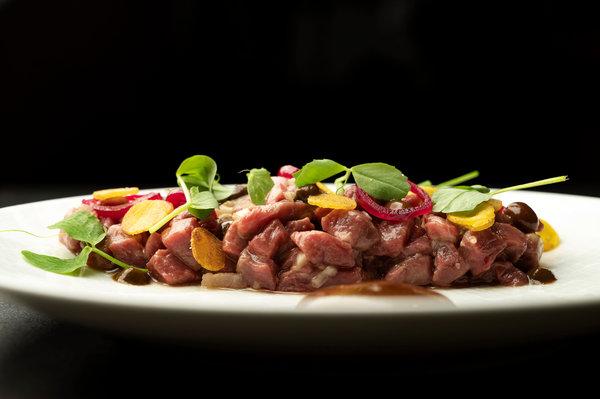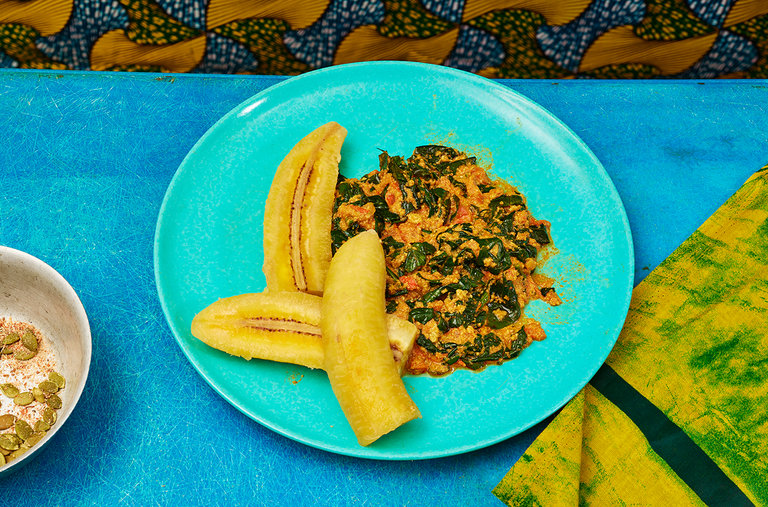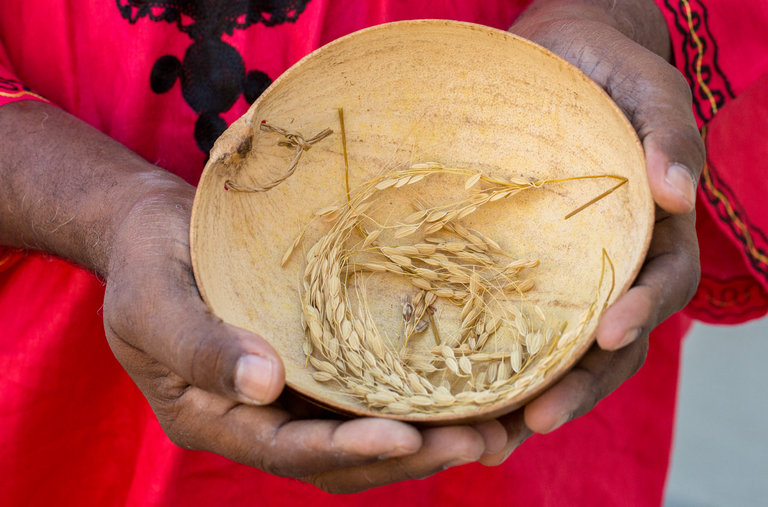Nearly a year ago, the chef Eric Adjepong stood in Macau on the set of the “Top Chef,” having made it to the finals of the cooking competition show. The only thing standing between him and the title was a four-course meal, served in two parts. He’d decided to use his menu to show the judges how influential Africa’s culinary heritage is on other parts of the world, including America.
“I wanted to tell the story of the trans-Atlantic slave trade from Africa through Caribbean ports, the American South and South America through food,” he said recently. “It’s an unfortunate story, but one that needs to be told.”
Mr. Adjepong, 31, is first-generation Ghanaian-American, and grew up in the Little Ghana neighborhood of the Bronx. He was the first West African contestant on “Top Chef,” which just aired its 16th season, introducing some viewers and judges to dishes like fufu and egusi stew.
And then, after the first course, Mr. Adjepong was eliminated, after the jerk sauce in his Jamaican-inspired steak tartare overwhelmed the flavor of the beef, and his yuca chip garnish spent too much time in the fryer. He lost to two white Southern chefs, which he found ironic: “Their story is rooted in West Africa, too,” he said, “just in a different way.”
The episode, which aired in March, elicited strong reactions from fans on social media, with some viewers calling for more diverse judges who would understand the nuances of the various cuisines of the African diaspora referenced in Mr. Adjepong’s cooking. “The support was overwhelming,” he said. “People were just so proud to see the food that I was cooking.”

Mr. Adjepong’s Jamaican-influenced steak tartare, made with jerk sauce. He reworked the dish after cooking it on the finale of “Top Chef.”CreditKarsten Moran for The New York Times
Alexander Smalls, a New York restaurateur and author focusing on African-American foodways, was a judge for the second part of the finale, after Mr. Adjepong was eliminated, and he was confronted with the outcry after the episode aired. “Folks were really looking forward to his meal and felt like they had lost something by not getting to see it,” he said. “It was more than a meal, it was educational.”
The chef Tom Colicchio, the head “Top Chef” judge, said that he had anticipated that reaction; he reached out to Mr. Adjepong after the episode aired to see if he wanted to do a dinner and finish cooking his menu.
And so on Monday evening, at Mr. Colicchio’s restaurant Craft in Manhattan, Mr. Adjepong presented the full menu: “The Trans-Atlantic Slave Trade Through Food,” a dinner that zigzags across the Atlantic Ocean, retracing the forced migration of enslaved Africans and illuminating the deep and lasting global culinary influences of the continent.
Over the four courses, Mr. Adjepong combined ingredients from Ghana, Nigeria and Senegal with influences from countries and regions along the slave trade routes, tracing lines to Jamaica and other islands in the Caribbean, Brazil and the southeastern United States.
A course of king crab, the meat twirled into bundles like angel hair pasta, rested in a pool of beurre blanc made with palm wine, a West African drink made of palm tree sap, the sauce studded with puffed Carolina Gold rice. Onion jam mimicked the tangy, spiciness of the Senegalese stew poulet yassa. Cassava, also known as yuca, showed up in multiple courses, a reflection of its importance in the cuisines of the diaspora.
A dessert of corn and goat’s milk pudding was served with piles of tangy magenta tapioca pearls made with Nigerian hibiscus, familiar to anyone who knows the drinks zobo, sorrel or sobolo. (“Hibiscus is such a familiar flavor and color across the diaspora, I wanted to include it,” Mr. Adjepong said.)
This was the first in a series of dinners at Craft highlighting chefs with strong culinary voices who do not have brick-and-mortar restaurant spaces. Through mid-June, Craft will host dinners by the chefs Omar Tate, a Philadelphia chef who uses food to explore blackness in America at his pop-up Honeysuckle; Gabriela Álvarez, who uses food to tell the story of Puerto Rico before and after Hurricane Maria; and Behzad Jamshidi, who uses spoken word and art in addition to food to create a multisensory Persian experience.
Mr. Colicchio said more diners are seeking out these kinds of stories instead of “just ingredients on a plate,” and that he wants to use his platform to support this kind of work. “I’m Italian-American, but I grew up cooking French food and was taught that’s what you had to do,” he said. “I think a lot of people are turning around and saying, ‘No, we don’t have to do that food.’”
“Young chefs who have worked under older chefs are now seeing that they don’t have to cook French and Italian, and they can tell their own stories,” he added.
Monday night’s dinner gave Mr. Adjepong the opportunity to finish this particular story and continue his mission of making African food more prominent in America. From an open kitchen, with the help of a team of six chefs, he cooked the meal he hopes will illustrate Africa’s culinary influence on the world.
“So, you’re going to have the steak tartare first, but there’s been some adjustments,” he said to the diners as he laughed, while Fela Kuti’s “Water No Get Enemy” played softly in the background. That night, the tartare sat under herbs with flaked salt and fresh shallots, with a pool of the jerk sauce on the side and fried plantain chips adorning the dish like polka dots.
“I was supposed to do this meal for the finale,” he said to the crowd. “But being at home in New York, this feels a lot better.”








